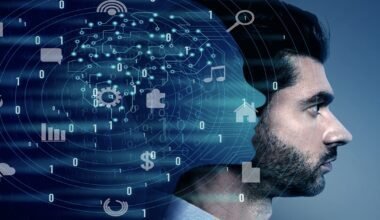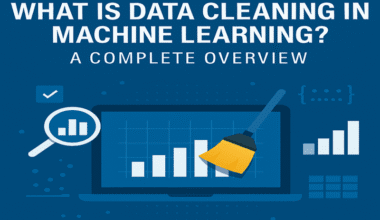Summary: Land your dream Data Science job! This comprehensive guide equips you with the latest data science interview questions and answers for all experience levels. Learn about foundational concepts, intermediate techniques, and advanced topics like deep learning. Go beyond technical skills with soft skills advice.
Introduction
The Data Science field continues to boom, with demand for skilled professionals outpacing supply. As a result, landing your dream Data Science job requires strong technical skills and the ability to communicate effectively during interviews.
This blog post equips you with the latest Data Science interview questions and answers for 2024, categorized by difficulty level to guide you through the entire interview process.
Also Read: Crucial Statistics Interview Questions and Answers
Beginners Level (For Freshers)
Data Science interview jitters? Conquer basics like data visualization, statistics, and supervised vs unsupervised learning with these beginner-friendly questions and answers.
Define Data Science and its Core Components.
Data Science is a multidisciplinary field that extracts knowledge and insights from data using scientific methods, statistics, and programming. It involves three key components:
Data Acquisition & Cleaning: Gathering, wrangling, and preparing raw data for analysis.
Exploratory Data Analysis (EDA):Summarizing and visualizing data to understand its characteristics and relationships.
Machine Learning (ML): Building models that learn from data to make predictions or classifications.
Differentiate Data Science from Data Analytics.
While both fields deal with data, Data Science focuses on building models for predictions and uncovering hidden patterns, while Data Analytics leans towards descriptive statistics and data visualization to understand past trends.
Explain the Differences Between Supervised and Unsupervised Learning.
Supervised learning involves training a model on labelled data (inputs with corresponding outputs) to make predictions on new, unseen data. Examples include linear regression for predicting house prices or logistic regression for spam classification.
Unsupervised learning deals with unlabeled data, where the goal is to uncover hidden patterns or group data points into clusters. K-means clustering for customer segmentation or anomaly detection algorithms are examples of unsupervised learning.
Describe Common Data visualization Techniques.
Data Scientists rely on various charts and graphs to communicate insights effectively. Popular techniques include:
Bar charts: Compare categories (e.g., customer satisfaction by-product).
Line charts: Show trends over time (e.g., stock prices over a year).
Scatter plots: Identify relationships between two variables (e.g., income vs. house price).
Heatmaps: Visualize data with two categorical variables (e.g., customer behavior across different product types).
Explain Basic Statistical Concepts Like Mean, Median, and Standard Deviation.
These terms represent central tendency and spread of data:
Mean: Average of all data points.
Median: Middle value when data is ordered.
Standard deviation: Measures how spread out the data is from the mean.
Intermediate Concepts (For Mid-Level Professionals)
Level up your data science skills! This section dives into concepts crucial for mid-career professionals. Explore machine learning model building, address overfitting and underfitting, and discover feature selection techniques. Master the differences between KNN and SVM algorithms.
Explain the Steps Involved in Building a Machine Learning Model.
The ML model-building process typically follows a standardized workflow:
Problem Definition: Clearly define the business goal and desired outcome.
Data Collection & Exploration: Gather relevant data and understand its characteristics.
Data Preprocessing: Clean and prepare data for model training by handling missing values, outliers, and scaling if needed.
Model Selection: Choose an appropriate ML algorithm based on the problem type (classification, regression, etc.).
Training & Evaluating the Model: Train the model on a portion of the data and evaluate its performance on a separate hold-out set using metrics like accuracy, precision, and recall.
Model Tuning: Optimize hyperparameters of the chosen model to improve performance.
Model Deployment & Monitoring: Deploy the trained model to production and monitor its performance over time.
Discuss the Concept of Overfitting and Underfitting in Machine Learning.
Overfitting occurs when a model memorizes training data too well, losing its ability to generalize to unseen data. It manifests as high training accuracy but poor performance on new data.
Underfitting happens when a model is too simple and fails to capture the underlying patterns in the data, resulting in low accuracy on both training and testing data.
Describe Different Feature Selection Techniques.
Feature selection emphasizes choosing the most relevant features from the data to improve model performance and interpretability. Common techniques include:
Filter-based methods: Rank features based on statistical measures like correlation with the target variable.
Wrapper-based methods: Evaluate subsets of features using a model to select the best performing set.
Embedded methods: Feature selection is incorporated within the model training process itself (e.g., LASSO regression).
Explain the Differences Between K-Nearest Neighbors (KNN) and Support Vector Machines (SVM).
KNN classifies a data point based on the majority vote of its K nearest neighbors in the training data. It’s simple to implement but can be computationally expensive for large datasets.
SVMs find the hyperplane that best separates data points of different classes with the largest margin. They are powerful for high-dimensional data but can be less interpretable than KNN.
Discuss Common Challenges in Data Science Projects and How to Address Them.
Data Science projects are not without their hurdles. Here are some common challenges and solutions:
Data quality issues: Ensure data is clean, consistent, and free of errors through data cleaning techniques like missing value imputation and outlier handling.
Data bias: Be aware of potential biases in data collection or selection processes and implement mitigation strategies.
Model interpretability: Balance model complexity with interpretability to understand and explain model predictions, especially for critical applications.
Communication of results: Present insights effectively to both technical and non-technical audiences, using clear visualizations and storytelling.
Advanced Concepts (For Experienced Professionals)
For data science veterans, this section dives deep into advanced concepts like deep learning and its applications. Explore the bias-variance trade-off, master ensemble methods like random forests, and discover dimensionality reduction with PCA. We’ll also discuss the ever-important ethical considerations in data science.
Explain the Concept of Deep Learning and Its Applications.
Deep learning is a subfield of machine learning inspired by the structure and function of the human brain. It utilizes artificial neural networks with multiple hidden layers to learn complex patterns from data. Applications include:
Image recognition: Classifying objects in images (e.g., self-driving cars).
Natural Language Processing (NLP):Understanding and generating human language (e.g., machine translation).
Recommender Systems: Suggesting relevant products or content to users (e.g., e-commerce platforms).
Discuss the Trade-off Between Bias and Variance in Machine Learning Models.
Bias-variance trade-off refers to the balancing act between a model’s ability to fit the training data (bias) and its ability to generalize to unseen data (variance). High bias leads to underfitting, while high variance can cause overfitting. Techniques like regularization can help manage this trade-off.
Describe Different Ensemble Learning Methods.
Ensemble methods combine predictions from multiple weaker models to create a stronger, more robust model. Popular techniques include:
Random forests: Build multiple decision trees using random subsets of features and data, reducing overfitting.
Gradient boosting: Trains models sequentially, with each subsequent model focusing on the errors of the previous model.
Bagging (Bootstrap aggregating): Trains models on different random samples of data with replacement, improving diversity.
Explain Dimensionality Reduction Techniques Like Principal Component Analysis (PCA).
PCA is a technique used to reduce the dimensionality of data while preserving most of its information. This can be beneficial for:
Improving computational efficiency: Lower dimensional data requires less processing power.
Visualization: High-dimensional data is difficult to visualize. PCA can project data onto a lower-dimensional space suitable for visualization.
Discuss the Ethical Considerations in Data Science.
With the increasing power of Data Science, ethical considerations like data privacy, fairness, and accountability are crucial. Data Scientists should be aware of potential biases in algorithms and ensure responsible use of data following ethical guidelines.
Beyond Technical Skills: Highlighting Soft Skills
Remember, Data Science interviews go beyond technical knowledge. Highlighting your soft skills like communication, collaboration, and problem-solving is equally important. Showcase your ability to:
- Communicate complex ideas clearly and concisely.
- Work effectively in teams and collaborate with stakeholders.
- Think critically and solve problems creatively.
- Demonstrate a passion for learning and staying up-to-date with the latest advancements in Data Science.
Conclusion
By mastering these Data Science interview questions and answers, combined with strong, soft skills, you’ll be well-equipped to impress potential employers and land your dream Data Science job. Remember, continuous learning and staying updated with the ever-evolving field are key to success in this dynamic domain.




